Posts belonging to Category Tips for Engineers

May 9, 2012
|
Posted by Jon (admin)
 For several years, I’ve had some Sennheiser e604’s that I’ve always used for recording the toms on drum kits. Lately though, I had been particularly unimpressed with how my tom tracks have sounded, so I decided to try out a pair of the much-loved-for-toms, CAD M179’s. I only bought two M179’s and set one mic between my two high toms (10″ & 12″) and the other between my two floor toms (14″ & 16″). I engaged the -20 db pad on the M179’s and set the pattern to hypercardioid to try and minimize bleed. (more…)
For several years, I’ve had some Sennheiser e604’s that I’ve always used for recording the toms on drum kits. Lately though, I had been particularly unimpressed with how my tom tracks have sounded, so I decided to try out a pair of the much-loved-for-toms, CAD M179’s. I only bought two M179’s and set one mic between my two high toms (10″ & 12″) and the other between my two floor toms (14″ & 16″). I engaged the -20 db pad on the M179’s and set the pattern to hypercardioid to try and minimize bleed. (more…)
 Categories: Drums, Recording, Reviews, Tips for Engineers
|
Categories: Drums, Recording, Reviews, Tips for Engineers
|  Tags: CAD M179, Drums, Recording, Sennheiser e604, tom mics, toms
Tags: CAD M179, Drums, Recording, Sennheiser e604, tom mics, toms

March 19, 2012
|
Posted by Jon (admin)

A few weeks ago, I was watching the movie Kung Fu Panda with my son. In the film, Po (the Kung Fu Panda), finally learns the secret of both Kung Fu, and of his adoptive father’s noodle soup: there is no secret ingredient. If you’ve seen the movie, you know what I’m talking about. A few days later, I started considering how this same revelation applies to the world of recording. (more…)
 Categories: Recording, Tips for Engineers
|
Categories: Recording, Tips for Engineers
|  Tags: Recording, secrets, tips
Tags: Recording, secrets, tips

November 1, 2011
|
Posted by Jon (admin)
![adat[1]](http://silentsky.net/wordpress/wp-content/uploads/2011/11/adat1.gif)
If you’re confused by the multitude of common digital audio connections available today on many recording interfaces, such as ADAT, S/PDIF, AES/EBU, S/MUX, Word Clock, etc., you owe it to yourself to read this excellent article from Presonus:
Digital Audio Connections and Synchronization

 Categories: Recording, Tips for Engineers
|
Categories: Recording, Tips for Engineers
|  Tags: adat, audio, connections, digital, Recording, spdif
Tags: adat, audio, connections, digital, Recording, spdif

September 19, 2011
|
Posted by Jon (admin)
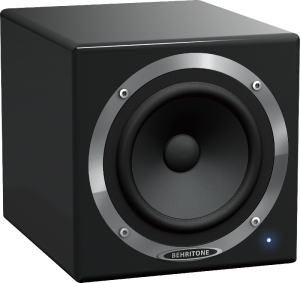
The Behritone C50A
For quite some time now, I’ve known about the merits of checking your mixes in mono to test for phase problems, and having some “grot boxes” (cheap, lo-fi speakers) to see what your mix will sound like on a less-than-stellar playback system. The idea behind the mono grot box is this: who cares if your mix sounds great on your studio monitors if it sounds like garbage on most listeners’ playback systems? (more…)
 Categories: Recording, Reviews, Tips for Engineers
|
Categories: Recording, Reviews, Tips for Engineers
|  Tags: behringer, behritone, c50a, c5a, Review
Tags: behringer, behritone, c50a, c5a, Review

September 8, 2011
|
Posted by Jon (admin)
![tuning-drums-1001[1]](http://silentsky.net/wordpress/wp-content/uploads/2011/09/tuning-drums-10011-300x243.jpg)
Most recordists will agree that acoustic drums are the most challenging instrument to record (and record well). One of the reasons (among several) is that a drum kit has so many moving parts that are prone to rattles, squeaks, buzzes, and other annoying sounds. It’s also quite a task to tune a drumkit, which always needs to be done prior to any recording session. (more…)
 Categories: Drums, Recording, Tips for Artists & Bands, Tips for Engineers
|
Categories: Drums, Recording, Tips for Artists & Bands, Tips for Engineers
|  Tags: DRUM, Drums, kit, preparing, recordings
Tags: DRUM, Drums, kit, preparing, recordings

August 17, 2011
|
Posted by Jon (admin)
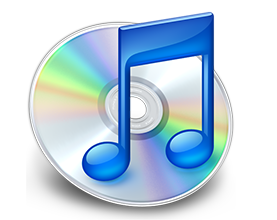
Tunecore is a service for musicians that allows you to sell your music on the iTunes store and other digital retailers with minimal hassle. I recently had a client who was trying to get his music uploaded to Tunecore, but wasn’t sure how to create the specific file type that is required by them. (more…)
 Categories: Bands, Music Marketing, Recording, Tips for Engineers
|
Categories: Bands, Music Marketing, Recording, Tips for Engineers
|  Tags: itunes, tunecore, wav
Tags: itunes, tunecore, wav

August 8, 2011
|
Posted by Jon (admin)

When working in the studio, some producers/engineers prefer to record each instrument completely separate from each other. First, they’ll record the drums, then the bass guitar, then the rhythm guitar, then the keyboards, etc. It’s almost like building a brick wall, with each instrument representing a single layer of bricks. (more…)
 Categories: Recording, Tips for Artists & Bands, Tips for Engineers
|
Categories: Recording, Tips for Artists & Bands, Tips for Engineers
|  Tags: bands, Recording, separate, studio, together
Tags: bands, Recording, separate, studio, together

June 23, 2011
|
Posted by Jon (admin)
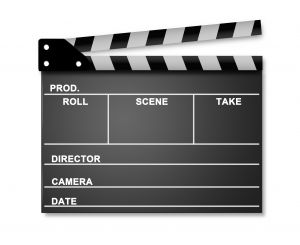
Between November 2010 and March 2011, I had the opportunity to do something I had never done before–record the audio for a short film. Some friends of mine who have a video production company here in Northeast Arkansas (Anthem Pictures), were producing it, and recruited me to handle the audio. (more…)
 Categories: Recording, Tips for Engineers
|
Categories: Recording, Tips for Engineers
|  Tags: audio, film, independent, indie, movies, Recording
Tags: audio, film, independent, indie, movies, Recording

April 20, 2011
|
Posted by Jon (admin)
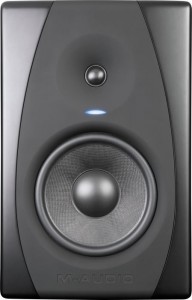
How many times has this happened to you? You’ve been slaving away for hours, even days, mixing your latest musical masterpiece in your home studio. Everything sounds absolutely perfect. Then, you burn it to a CD, jump in the car, and pop it in your CD player. You’re ready to hit the open road and jam out to the greatest tune you’ve ever recorded. Then, the CD starts playing. You’re underwhelmed. The CD sounds dull and lifeless. There’s not enough high end. There’s too much low end. And what happened to the snare drum? You can hardly hear it at times because it’s being buried in the mix by other instruments. (more…)
 Categories: Recording, Tips for Engineers
|
Categories: Recording, Tips for Engineers
|  Tags: accurate monitoring, acoustic treatment, studio monitors
Tags: accurate monitoring, acoustic treatment, studio monitors

August 3, 2010
|
Posted by Jon (admin)
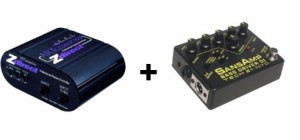
A couple of years ago, I read a book called “Guerrilla Home Recording: How to Get Great Sound from Any Studio”. A neat tip that I picked up from the book is to record the signals from both a DI box and a miked bass amp to different tracks. Then you can blend the two tracks together to get a different tone for different songs. You’ll get a very clean tone from the DI box (because it’s coming straight from the bass guitar’s pickups), and depending on how hard the amp is driven, you’ll get some grit and distortion, and more color from the miked amp. I’ve used this technique with some limited success. (more…)
 Categories: Recording, Signal Processing, Tips for Engineers
Categories: Recording, Signal Processing, Tips for Engineers
 For several years, I’ve had some Sennheiser e604’s that I’ve always used for recording the toms on drum kits. Lately though, I had been particularly unimpressed with how my tom tracks have sounded, so I decided to try out a pair of the much-loved-for-toms, CAD M179’s. I only bought two M179’s and set one mic between my two high toms (10″ & 12″) and the other between my two floor toms (14″ & 16″). I engaged the -20 db pad on the M179’s and set the pattern to hypercardioid to try and minimize bleed. (more…)
For several years, I’ve had some Sennheiser e604’s that I’ve always used for recording the toms on drum kits. Lately though, I had been particularly unimpressed with how my tom tracks have sounded, so I decided to try out a pair of the much-loved-for-toms, CAD M179’s. I only bought two M179’s and set one mic between my two high toms (10″ & 12″) and the other between my two floor toms (14″ & 16″). I engaged the -20 db pad on the M179’s and set the pattern to hypercardioid to try and minimize bleed. (more…) May 9, 2012
|
Posted by Jon (admin)
May 9, 2012
|
Posted by Jon (admin)
 Categories:
Categories:  Tags:
Tags: 
![adat[1]](http://silentsky.net/wordpress/wp-content/uploads/2011/11/adat1.gif)


![tuning-drums-1001[1]](http://silentsky.net/wordpress/wp-content/uploads/2011/09/tuning-drums-10011-300x243.jpg)





